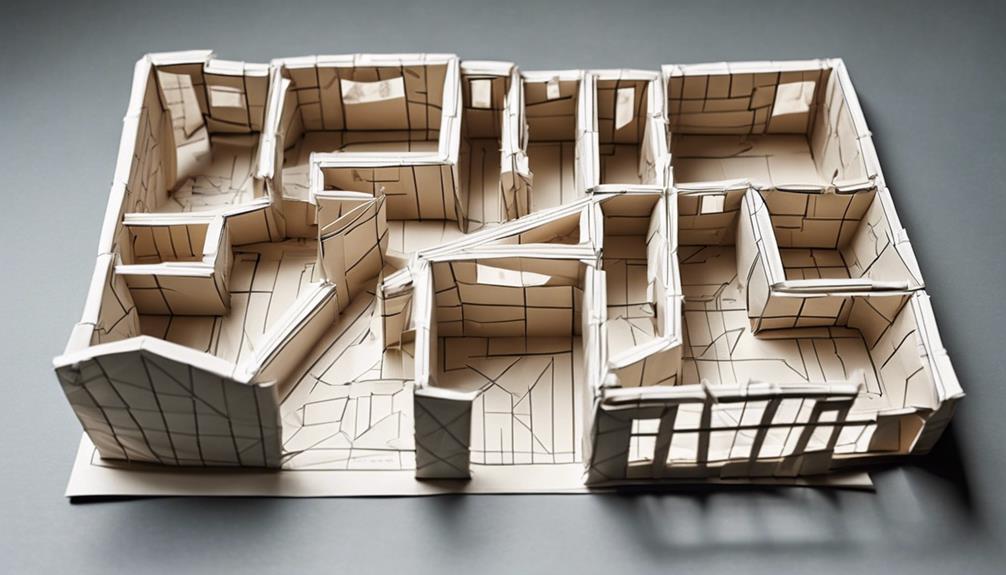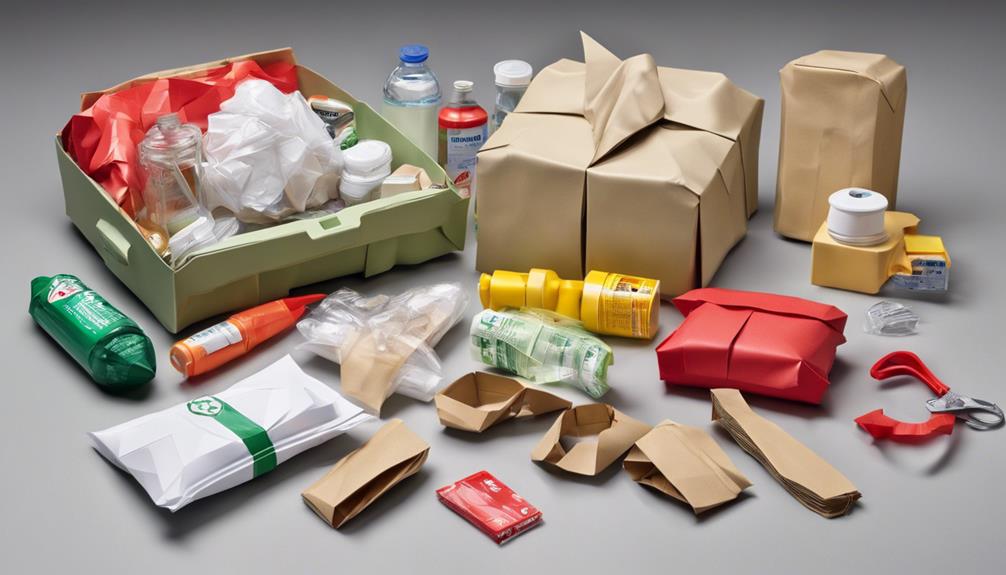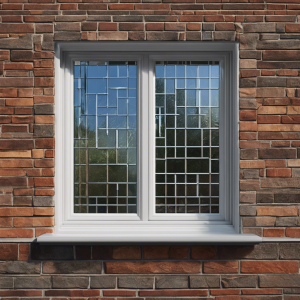Did you know that tornadoes can reach wind speeds of over 300 miles per hour? When it comes to tornado safety, knowing the safest places inside your home can be a matter of life and death. From basements to interior rooms, understanding where to seek shelter during a tornado is crucial for your family’s well-being. But what are the key factors to consider when identifying these safe spots? Let’s explore the essential tips that can help you stay protected when a tornado strikes.
Importance of Tornado Safety

Understanding the critical importance of tornado safety within your home can be the key to minimizing risk and ensuring the well-being of you and your loved ones. Tornadoes are unpredictable and can cause significant damage in a matter of seconds. That’s why being prepared and knowing what to do in the event of a tornado is crucial.
One of the best ways to be prepared is by conducting tornado drills with your family. These drills help everyone in your household understand what actions to take when a tornado warning is issued. Designate a safe room in your home where you can seek shelter during a tornado. This room should ideally be in the basement or an interior room on the lowest level of your home.
In the event of a tornado warning, it is essential to act quickly. Gather your family members and pets and move to the designated safe room. Make sure everyone knows to crouch low to the ground, cover their heads, and protect themselves from flying debris. Having a plan in place for a family emergency like a tornado can make all the difference in ensuring everyone’s safety. Remember, staying informed, practicing tornado drills, and having a designated safe space are paramount in tornado safety.
Factors to Consider
To enhance your tornado safety preparedness, it is essential to consider various factors that can influence the effectiveness of your safety measures inside your home. When evaluating the safest places within your home during a tornado, there are specific factors you should take into account:
- Proximity to Safe Zones: Identify safe zones in your home, such as rooms without windows or external walls, and consider their accessibility during an emergency.
- Structural Integrity: Assess the structural strength of different areas in your home to determine the best shelter options in case of a tornado.
- Accessibility: Ensure that the chosen safe zones or shelter options are easily accessible to all household members, including individuals with mobility challenges.
- Ventilation: Consider the ventilation options in the designated safe zones or shelters to prevent suffocation or discomfort during prolonged stays.
Considering these factors will help you make informed decisions about where to seek shelter during a tornado. By carefully evaluating safe zones, shelter options, structural integrity, accessibility, and ventilation, you can better prepare yourself and your loved ones for potential tornado emergencies inside your home.
Basements and Cellars

Considering the safety of your household during a tornado, basements and cellars serve as crucial shelter options due to their structural resilience and protection from high winds. Basements offer several advantages during a tornado. Being underground, they provide a natural barrier against the destructive force of high-speed winds.
The foundation and walls of a basement are typically sturdier than above-ground structures, offering better protection against flying debris and collapsing walls. Additionally, the lack of windows in basements reduces the risk of shattered glass causing harm.
On the other hand, cellars are synonymous with safety during tornadoes. Often found in older homes, cellars are dug deeper into the ground compared to basements, providing an extra layer of protection. This depth shields you from the brunt of the storm’s fury, making cellars a reliable refuge during extreme weather conditions. The thick walls and solid construction of cellars enhance their safety, offering peace of mind when seeking shelter from a tornado.
Interior Rooms
During a tornado, seeking shelter in interior rooms can provide crucial protection from high winds and flying debris. When selecting an interior room in your home as a haven during a tornado, consider the following:
- Safe Corners: Look for corners within the interior room that are away from windows and doors. These corners can offer additional structural support and protection from debris.
- Interior Walls: Position yourself along interior walls rather than exterior walls to minimize the risk of being hit by flying objects or collapsing structures.
- Avoid Outer Walls: Stay away from outer walls as they are more susceptible to damage from the high winds of a tornado. Interior walls provide an extra layer of protection.
- Sturdy Furniture: If possible, take cover under sturdy furniture such as a heavy table or desk. This can shield you from falling debris and offer a physical barrier in case of structural collapse.
Avoiding Windows

You should aim to seek windowless rooms during a tornado for the highest level of safety. Interior spaces away from windows provide better protection from flying debris and potential glass breakage. Remember to stay away from windows to reduce the risk of injury during a tornado.
Windowless Rooms Best
In the event of severe weather, seeking refuge in windowless rooms is crucial for maximizing safety inside your home. When it comes to shelter options during a tornado, choosing a windowless room is your best bet. Here’s why:
- Protection: Windowless rooms offer better protection against flying debris.
- Privacy: These rooms provide a sense of privacy and security during chaotic times.
- Peace of Mind: Being in a windowless room can help ease your mind and reduce anxiety.
- Focus: Eliminating the distraction of windows allows you to focus on staying safe and calm.
Seek Interior Spaces
Seeking interior spaces during severe weather is vital for safety, particularly to avoid windows. When a tornado strikes, finding shelter in interior rooms is crucial. These spaces provide better protection against flying debris and high winds. Ideal interior shelters include basements, bathrooms, and closets away from windows.
Consider reinforcing these areas as safe rooms with sturdy walls and a heavy-duty door for added security. Interior rooms on the lowest floor of your home offer the best protection during a tornado. Remember, the goal is to distance yourself from windows to reduce the risk of injury. Prioritize safety by seeking these interior spaces when severe weather threatens your area.
Stay Away From Windows
To maximize safety during a tornado, it is imperative to stay clear of windows to minimize the risk of injury from flying debris and high winds. When seeking shelter inside your home, remember these crucial points:
- Window barricades: Avoid standing near windows or glass doors; use heavy objects to block them if possible.
- Interior retreats: Move to the innermost rooms away from windows, such as a basement, bathroom, or closet.
- Stay low: Crouch down and protect your head and neck with your arms.
- Emergency kit: Keep a bag with essentials like water, first aid supplies, and a flashlight in your designated safe area.
Sturdy Furniture Protection

Ensure your heavy furniture is securely anchored to the wall to prevent tipping during a tornado. This simple step can significantly reduce the risk of injury or damage caused by furniture toppling over. Additionally, consider using protective coverings on sharp corners or edges of furniture to further minimize potential hazards during a tornado.
To provide a more comprehensive view, let’s break down the importance of furniture anchoring and protective coverings in the table below:
| Benefits of Furniture Anchoring | Benefits of Protective Coverings |
|---|---|
| Prevents furniture from tipping over | Reduces the risk of injuries from sharp edges |
| Increases overall safety in the home | Adds an extra layer of protection during emergencies |
| Minimizes property damage | Enhances child and pet safety |
Stay Low and Covered
For optimal safety during a tornado, position yourself low to the ground and seek cover. When a tornado strikes, staying low can significantly reduce your risk of injury. Here’s what you need to know to stay safe:
- Move Quickly: When a tornado warning is issued, don’t hesitate. Move swiftly to the safest place in your home.
- Stay Low: Get down on the lowest level of your home, preferably in a basement or a storm shelter if you have one. If you don’t have access to these safe rooms, opt for an interior room without windows.
- Cover Up: Once you’re in a low and secure location, protect yourself by covering your head and neck with your arms, a helmet, or a heavy blanket.
- Practice Drills: Regularly conduct tornado drills with your household to ensure everyone knows where to go and what to do in case of an emergency. Familiarity with the safety procedures can save precious time when a real tornado hits.
Emergency Supplies

In times of tornado emergencies, having essential emergency supplies readily available can be critical for your safety and well-being. One of the most important components of tornado preparedness is having a well-stocked emergency kit. Your emergency kit should include items such as non-perishable food, water, a flashlight, batteries, a first aid kit, any necessary medications, a multi-tool, and a portable weather radio. Make sure to regularly check your kit and replace any expired items.
Identifying shelter locations within your home is also crucial. The safest place during a tornado is a basement or storm cellar. If your home doesn’t have these options, choose an interior room on the lowest level without windows, such as a bathroom or closet. Remember to stay away from corners, windows, doors, and outside walls. If you live in a mobile home, it is essential to have a plan for seeking sturdier shelter in advance.
Additionally, consider storing important documents, such as identification papers, insurance policies, and emergency contact information, in a waterproof and fireproof container as part of your emergency supplies. Being prepared with these supplies and knowing your shelter locations can make a significant difference in keeping you and your loved ones safe during a tornado.
Frequently Asked Questions
Can Pets Be Considered in Tornado Safety Plans and What Measures Can Be Taken to Keep Them Safe During a Tornado?
Ever wondered how to ensure your furry friends stay safe during a tornado? Consider pet shelters in your emergency kits. Understand animal behavior to guide them to safe rooms. Plan ahead for their protection.
What Are Some Common Misconceptions About Tornado Safety That People May Have?
When it comes to tornado safety, common misconceptions can lead to risky decisions. Emergency supplies and shelter options are vital. Stay informed to avoid believing myths that may put you in harm’s way.
Are There Any Specific Safety Precautions That Should Be Taken for Individuals With Disabilities During a Tornado?
In the realm of emergency preparedness, it’s vital to consider disability accommodations during a tornado. Ensuring safe spaces and clear evacuation plans tailored to individual needs can be a lifesaver. Your well-being matters most.
How Can Families With Young Children Best Prepare for a Tornado and Keep Them Safe During the Storm?
When preparing for tornadoes with young children, ensure you have emergency kits ready with essentials like food, water, and comfort items. Practice evacuation plans regularly so everyone knows what to do in case of a storm.
Are There Any Technological Tools or Apps That Can Help Individuals Stay Informed and Prepared for Tornadoes in Their Area?
Seeking to enhance your tornado preparedness? Utilize emergency alerts and weather tracking apps for real-time updates on impending storms. These tools provide critical information to keep you informed and safe during severe weather events.



